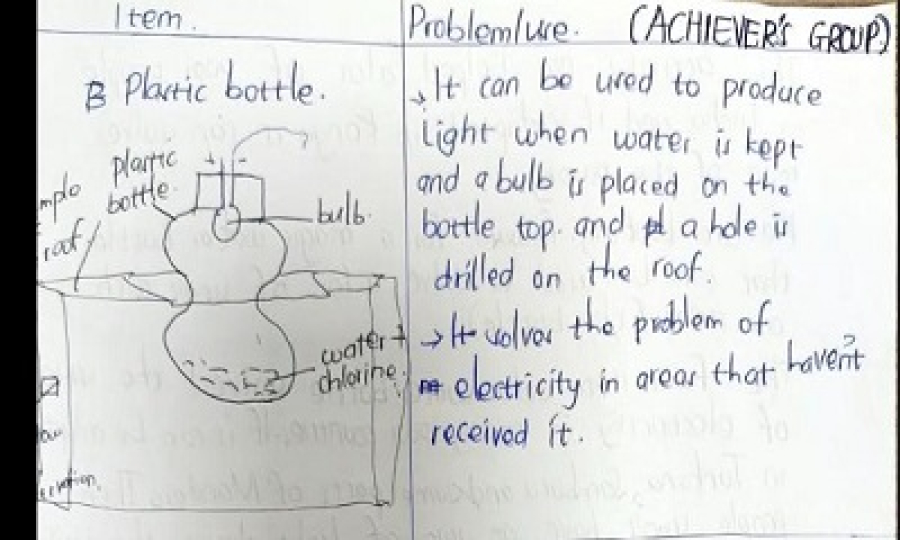Makerspaces: Hubs for Creativity and Innovation
By Kizito Makoba
The youth is brimming with original ideas, waiting for a tiny spark to kindle them. While raising awareness of the significance of maker spaces in schools, CEMASTEA’s engagement with students from STEM model schools around the country proved that this assertion was accurate. Regarding STEM pedagogies, Education for Sustainable Development (ESD), the creation of maker spaces, and their integration into the teaching-learning process, the Centre has been offering training to teachers and school leadership in STEM model schools. These trainings aimed to create interest in STEM subjects by popularising maker spaces as learning resources to enable learners to develop their creativity, critical thinking and problem-solving skills.
A strategy used to popularise the purposes of a maker space was one whereby teachers and learners engaged in a quick 10-minute STEM challenge ‘Magic Plastic Bottle’. The challenge involved developing as many useful products as possible from a used plastic water bottle. Another requirement for the challenge was that it had to be completed outside, preferably in some shade or under a tree. The usage of the outdoors was intended to demonstrate the versatility of maker spaces. Seeing the innovative products the teams created in under 10 minutes was incredible.
The above ideas are evidence of students’ innovativeness when given guidance through challenges. Schools can foster children's creativity by setting up maker spaces and regularly posing targeted problems for the students to develop solutions. The Sustainable Development Goals (SDGs) are a suitable starting point for framing the maker space challenges. For instance, SDG No. 6 for clean water and sanitation proposes measures to provide access to clean water and enhanced hygienic conditions. The challenge under this SDG can be to create a project that improves access to clean water and a hygienic environment. The challenges should be open to all students in the school, not only to STEM clubs or a particular group of students. We will likely notice an improvement in the student projects during the Kenya Science Engineering Fairs (KSEF) and other events where students display innovations.
The SCAMPER thinking tool was also introduced to assist pupils while they work on their creations. Substitute, Combine, Adapt, Modify (Magnify, Minify), Put to another use, Eliminate, Reverse (Rearrange) is an abbreviation for the SCAMPER. The fundamental idea behind most of our advancements is SCAMPER. The development of the mobile phone serves as a better example of this. The modern smartphone, with modifications, combines a variety of applications into a single unit. SCAMPER also emphasised how innovations are made possible by carefully studying and evaluating current technologies and formulating ideas for enhancing or improving them. Along with SCAMPER, another element that innovators research and draw inspiration from is the mother NATURE through biomimicry or copying nature to come up with solutions.
The combination of SCAMPER and biomimicry would assist teachers in giving students challenges to sharpen their problem-solving and critical-thinking abilities. Students might be challenged to alter a tool or equipment they use every day, for instance, so that it can do a different task or serve a different purpose. Students could also be given a creature, such as a praying mantis, and asked to explore its behaviour and structure concerning bionics. They are then challenged to create something based on specific traits or attributes of the mantis to address a real-life problem. These events should take place in the maker space.
A simple method to start a maker space is by filling it up with reusable items you use every day, such as cardboard boxes, cello tape, strings, cables, cutting tools, and Styrofoam, among others. Keep adding more supplies following the demands of the student's projects. Therefore, let's encourage innovation in our students by providing maker spaces in our schools. By becoming problem solvers or solution providers, students will be prepared for the rapidly changing world.
Latest from Esther Nyambura
- CEMASTEA Hosts Successful INSET Centre Principals’ Workshop
- CEMASTEA Conducts Successful Holistic Learning Training for Rwandan Teachers
- Empowering Quality Standards and Assurance Officers (QASOs) for Enhanced STEM Education
- Science and Mathematics Teachers Pilot Symposium: Innovative Classroom Practices
- CEMASTEA Strategic Plan 2023 – 2027: Key Highlights

